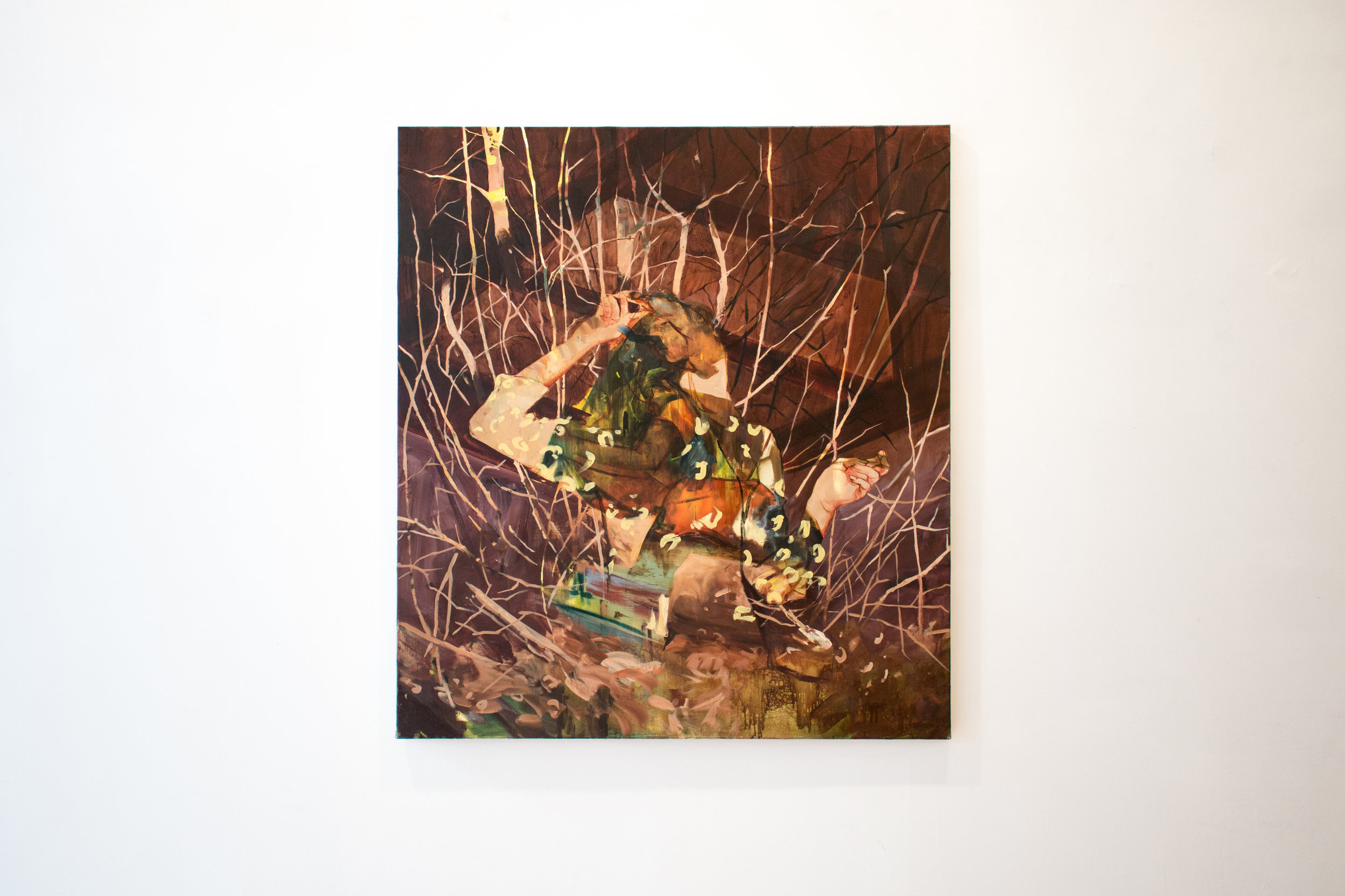Lorella Paleni

“The portraits are of women I know, artists, and friends, but the paintings are titled with the name of real “witches”. I am thinking of these portraits as acts of sisterhood, an attempt to remember them and defy those that wanted their name and story to be buried forever in ashes.”
Interview by: Simek Shropshire
Could you tell us a bit about yourself and your background? Where did you study?
I was born and raised in Italy. I studied painting at the Accademia di Belle Arti di Venezia in Venice and received my MFA in Visual Arts from Columbia University in New York City. I relocated to Paris in 2017 and I have been living and working there since.
In a recent body of work, you focus on the history of the witch-hunt and women’s persecution and resistance during the early modern period of the North American and European witch trials. What drew you to this particular subject?
Researching and reading about animals and nature I soon started seeing similarities between the way women, nature, and animals are and have been viewed, and consequently treated. Both, animals and women, have been seen as irrational, wild and uncontrollable, something to be tamed, weak and dangerous at the same time. Women and femininity have often occupied a gray area between man and animal. The witch is often represented as bestial. Many accused witches were cunning women, women with a deep knowledge of herbs, natural remedies, and nature. The image of the witch surfaced at the intersection of all these thoughts. Often an old woman, almost always poor, the witch was seen as a threat and socially dangerous subject.
You state that the inclusion of animals in your work “questions us about our own humanity and its meaning, but is also an unapologetic subject and inquisitive observer”. Could you expand upon how the presence of the animal, the Other, in your work exposes the inherent animalism in human existentialism?
The animal in my work is predominantly presented as subject; they are not a signifier for outside meaning or allegory. What we meet in the eyes of an animal staring at us is a being in its own right for which we have no language, and our own limitations in accessing this other being’s world. You can decide to discard her gaze, her existence, or you can look back at her and see a world that we have refused to recognize. I think animals show us new ways to be in the world that go beyond our own, new possibilities of existence, but also, because they are subjects, their gaze is questioning the legitimacy of our own doing and the assumptions on which societies are built. The presence of the animal can shake the ground on which man’s castle lays.
All Mingles 2015 - ETay Gallery
Caterina Ross (Gina) 2018
For A Name 2017
By supplying faces to these “witches," many of whom were forced to falsely plead guilty to the charges brought against them, how do you seek to portray these individuals in the modern era? How do you avoid a possible over-generalizations of their histories?
When I talk about the witches I am not talking about women practising magic. Although a small number of them did, the majority did not, in fact, believe themselves to be witches. Their mere existence was seen as diabolic, subversive, and dangerous. They represented a threat to the ruling system and their persecutions further helped divide people, and prevent organized revolts.
Since the majority of these witches were poor, we have no portrait or representations of them. For some, we still have written accounts (from the process papers or writings of their contemporaries), and for those we know their names. This is where the portraits come to be. The portraits are of women I know, artists, and friends, but the paintings are titled with the name of real “witches”. I am thinking of these portraits as acts of sisterhood, an attempt to remember them and defy those that wanted their name and story to be buried forever in ashes.
The Absence Of The Witch Does Not Invalidate The Spell 2017 - ETay Gallery
Benandanti (Night Guests) 2018
The Intruder 2018
Unruly 2018
What artwork have you seen recently that has resonated with you?
In July I was in New York and I got to see for the second time John Akomfrah's Vertigo Sea at the New Museum. Almost three years from when I saw it for the first time at the 56th Venice Biennale and the work still left a deep impression on me.
Tell us a bit about how you spend your day / studio routine? What is your studio like?
My current studio is a private space inside a former publishing house building converted into artists’ studios. I usually get there in the afternoon after lunch and don’t leave until late at night with the last metro. The late afternoon and night hours are the most productive time for me, creatively speaking, so I try to keep the earlier part of the day for admin and preparation work.
Is there anything new and exciting in the pipeline you would like to tell us about?
I am currently taking part to the Indo-European Residency organized by Alliance Française du Bengale, Goethe-Institut / Max Mueller Bhavan Kolkata, in collaboration with the Kolkata based gallery CIMA and Kala Bhavana, Visva Bharati University, Santiniketan, West Bengal. On December 14th I will be giving a final presentation of my work at the Goethe-Institut / Max Mueller Bhavan Kolkata. I will also have work in the show Listening to the Anthropocene at the Sarofim Fine Arts Gallery in Texas, curated by Douglas Cushing, from February 2- March 3, 2019.
All images are courtesy of the artist
Date of publication: 21/01/19






